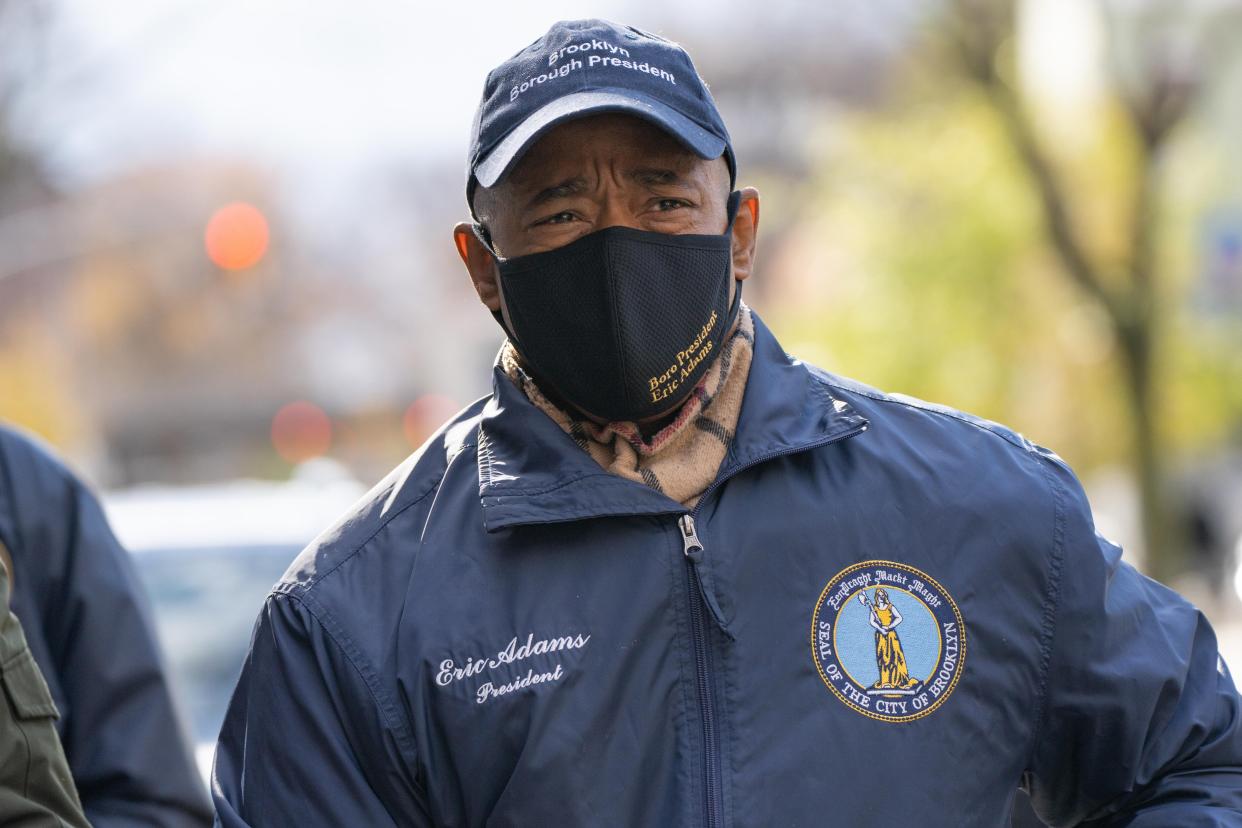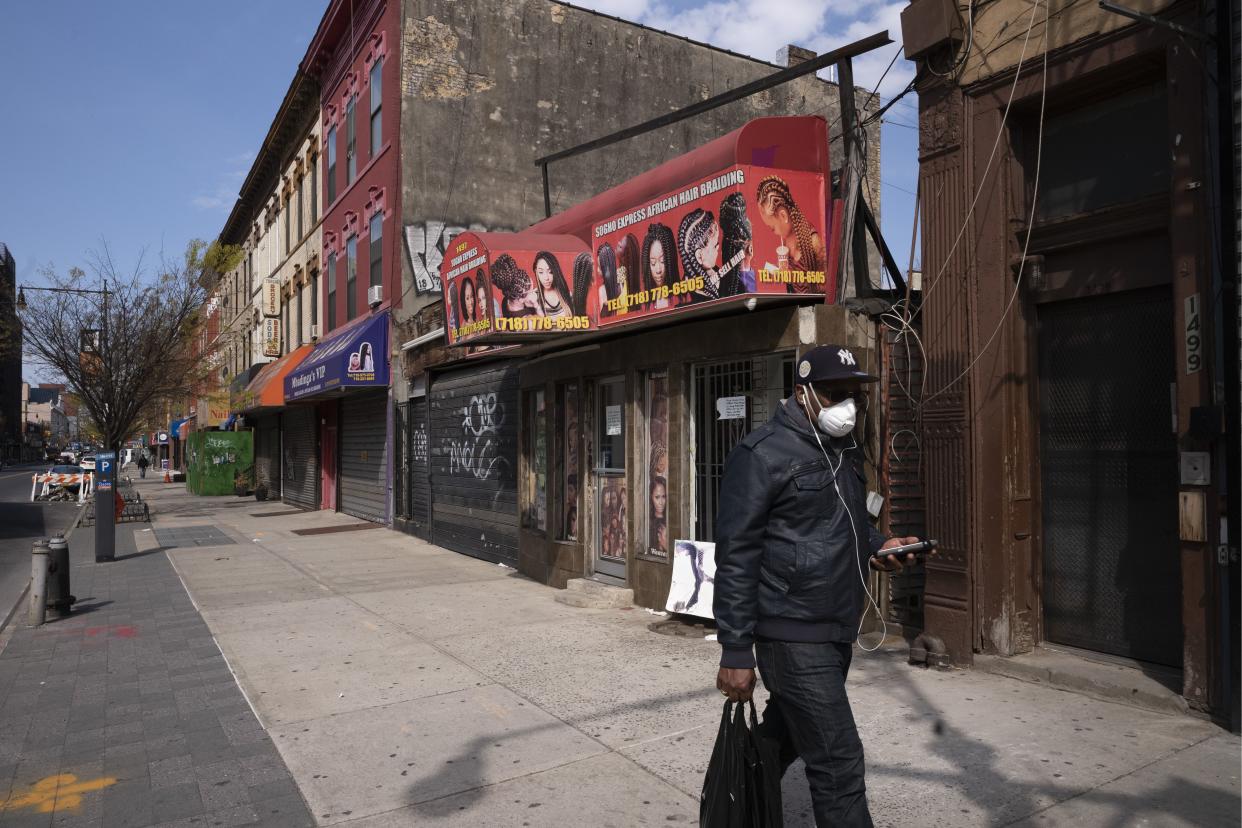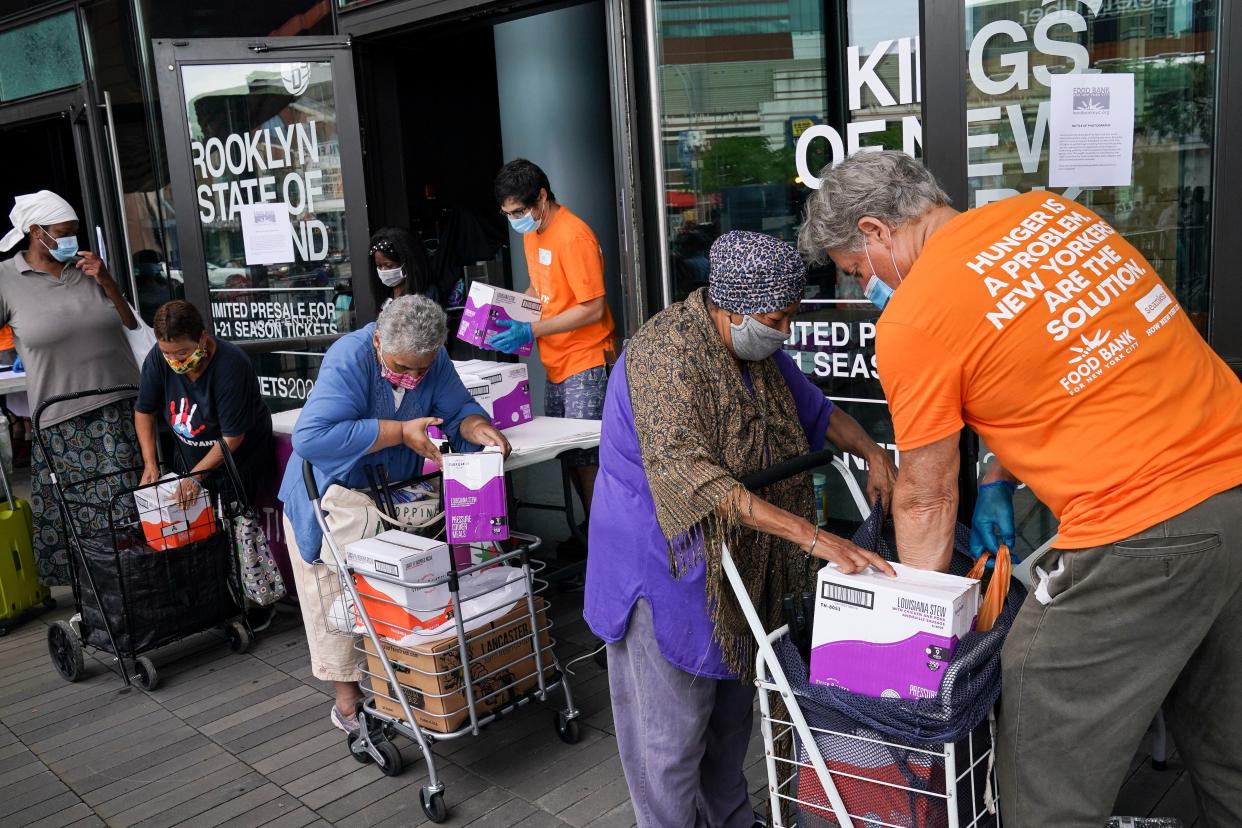Eric Adams to unveil tax credit plan aimed at relieving cash-strapped New Yorkers
Brooklyn Borough President Eric Adams on Monday will unveil a plan to provide cash-strapped New Yorkers with relief through a program that would pay out tax credit benefits monthly and in advance.
The plan, which Adams’ has dubbed NYC Advanced Income Deployment, or NYC AID, aims to boost the earned income tax credits poor families receive by more than 10 times. Adams estimates it would cost the city $1 billion annually.

Such credits are usually paid out at the end of the year in a lump sum, but according to a policy paper from Team Adams shared exclusively with the Daily News, the cash total would be expanded and paid out in advance.
“A New York City family with two children on the edge of poverty earning $30,000 a year would receive approximately $3,000 annually, or about $250 a month from a boosted city EITC program,” the policy paper states. “Credits would be paid out monthly as an advance by the city on qualifying New Yorkers’ past annual earnings.”
Adams is running for mayor in a crowded Democratic primary field that includes Andrew Yang, city Comptroller Scott Stringer, former HUD Secretary Shaun Donovan and Mayor de Blasio’s former legal counsel, Maya Wiley. Former Sanitation Commissioner Kathryn Garcia and former Citibank executive Ray McGuire are also in the running.
Yang, who ran for president last year, is perhaps best known for his support of universal basic income.

Adams’ plan would provide something similar in that it would put cash in the pockets of needy New Yorkers, but it differs in that it would rely on increasing the amount paid out for already existing tax credits.
Adams’ spokesman Evan Thies said the BP’s tax credit plan has been in the works since June of last year when he proposed a similar EITC increase for frontline workers.
As it now stands, people who qualify for the earned income tax credit with the federal government receive the benefit from the feds. New Yorkers also receive from the city a matching credit of 5% of what they receive from the feds. Under Adams’ plan the city’s matching benefit would increase significantly.

If elected, Adams plans to increase the earned-income tax credit the city pays out to 60% — up from 5% — for households earning $30,000 or less, and to 30% for households that bring in between $30,000 and $50,000 a year.
James Parrott, director of economic and fiscal policies at the New School’s Center for New York City Affairs, reviewed Adams’ proposal and described it as representing “a pretty significant commitment of tax resources to low-income households.”
“It could probably bear some tweaking here and there before it’s finalized,” he said, adding that such adjustments could include increased benefits for households with out-of-work adults and childless households.
“The city could do that,” he said.

Adams’ plan would also seek to assist recently unemployed New Yorkers whose prior year’s income may look substantial on paper — and would disqualify them for a tax credit — by making them eligible for the credits also.
“This would allow AID to cover nearly 900,000 New Yorkers,” the policy paper states. “The total amount advanced per household would reach up to $4,000 over 12 months for lower-income families with children.”
Payments to eligible households would be made through direct deposit or prepaid debit cards to bypass check-cashing joints and predatory lenders — a move Adams plans to support through working with banks to set up free checking accounts to city residents who don’t have them.
Those enrolled in the AID program would be connected with city welfare case workers as well to connect them to other city, state and federal services that they may qualify for, such as food stamps and housing assistance.

To pay the estimated $1 billion bill for the plan, Adams would institute cuts of 3% to 5% across all city agencies, through staff attrition and by pushing for a “modest increase to the city income tax on ultra-millionaires.”
“Combined, those actions are projected to save or create $5 billion to $6.5 billion in the first year, increasing year over year as headcount drops and further agency savings are found,” the policy paper states.
